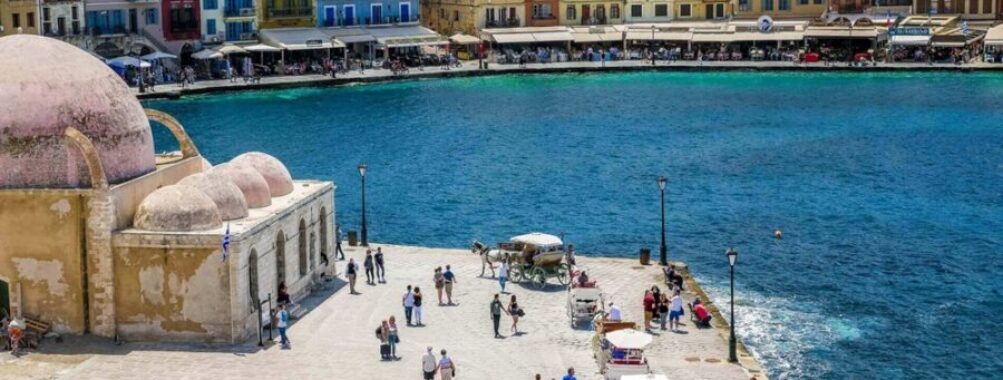
Is There Uber in Crete? Transportation Options for Travelers in 2025
Planning a trip to Crete and wondering how you’ll get around? If you’re used to calling an Uber in other countries, Crete might throw you a curveball.
There’s no Uber service in Crete—not in Heraklion, Chania, Rethymno, or anywhere else on the island.
Ride-sharing apps have become second nature for so many travelers these days. But Crete keeps things more old-school. Local taxis and transfer services are everywhere in the towns and cities, and they’ll get you where you need to go.
Some folks hope for a local app that works like Uber, but as of now, nothing quite fits the bill. No ride-hailing services operate here—at least, not the ones you’re probably used to.
Contents
- Key Takeaways
- Is There Uber in Crete?
- Availability of Uber on the Island
- Uber in Other Parts of Greece
- Common Misconceptions About Uber in Crete
- Alternative Transportation Options in Crete
- Local Taxi Services
- Car Rentals and Agencies
- Public Transport and Bus Service
- Best Taxi and Ride-Hailing Apps in Crete
- FREENOW and Its Coverage
- Beat App for Travelers
- Other Notable Apps: Bolt, Taxibeat, imove
- Comparing Transportation Options: Costs and Convenience
- Typical Taxi Fares in Crete
- Car Rental vs. Using Taxis
- When To Choose Public Transport
- Getting Around Major Cities and Towns
- Heraklion and Heraklion Airport
- Chania and Chania Airport
- Exploring Rethymno and Elounda
- Agios Nikolaos and Kissamos
- Traveling to and from Crete
- Connections to Athens and Other Mainland Cities
- Ferry Services: Minoan Lines
- Visiting Santorini, Mykonos, and Paros
- Airport Transfers and Options
- Tips for Navigating Transportation in Crete
- What to Know About Tips and Payments
- Dealing with Crowds and Peak Seasons
- Traveling in Rural Areas
- Exploring Crete Beyond Transport
- Cretan Beaches and Hidden Spots
- Cultural Highlights: Knossos and Local Traditions
- Food Scene and Delivery Apps
- Scooter Rentals and Alternative Mobility
- Frequently Asked Questions
- What are the available ride-hailing services in Crete for getting around?
- How does one commute from Crete’s airports without Uber?
- What is the preferred taxi app used by locals in Crete?
- Are there any alternatives to Uber operational in Heraklion?
- Can travelers rely on services like Lyft when visiting Chania, Crete?
- What transportation options are most recommended for tourists navigating Crete?
- More Travel Guides
Key Takeaways
- Uber, Bolt, and Lyft don’t exist on Crete.
- Taxis and transfer services are easy to find in every town.
- During the busy season, you might have to wait a bit longer for a ride, so plan ahead.
Is There Uber in Crete?
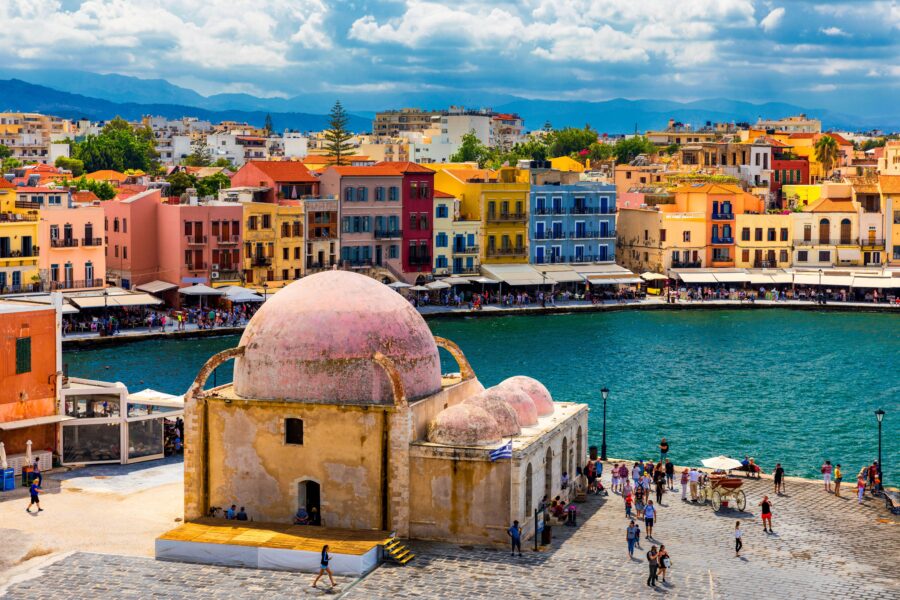
Crete, the biggest Greek island, offers different transportation options than you might expect if you’re coming from the US, UK, or even Athens. It’s worth figuring out what’s on offer before you land.
Availability of Uber on the Island
No Uber in Crete. Tourists keep hoping, but the ride-hailing giant hasn’t set up shop here. If you’re used to opening the app wherever you travel, you’ll be out of luck.
Open your Uber app in Crete, and you’ll see the interface, but you can’t actually book a ride. Sometimes it even pretends there are drivers nearby or says there’s a long wait. Don’t believe it—the service just isn’t here.
Local taxi unions and Greek transportation laws keep Uber (and similar companies like Bolt or Lyft) away. That’s not likely to change anytime soon, so you’ll want to look at other options.
Uber in Other Parts of Greece
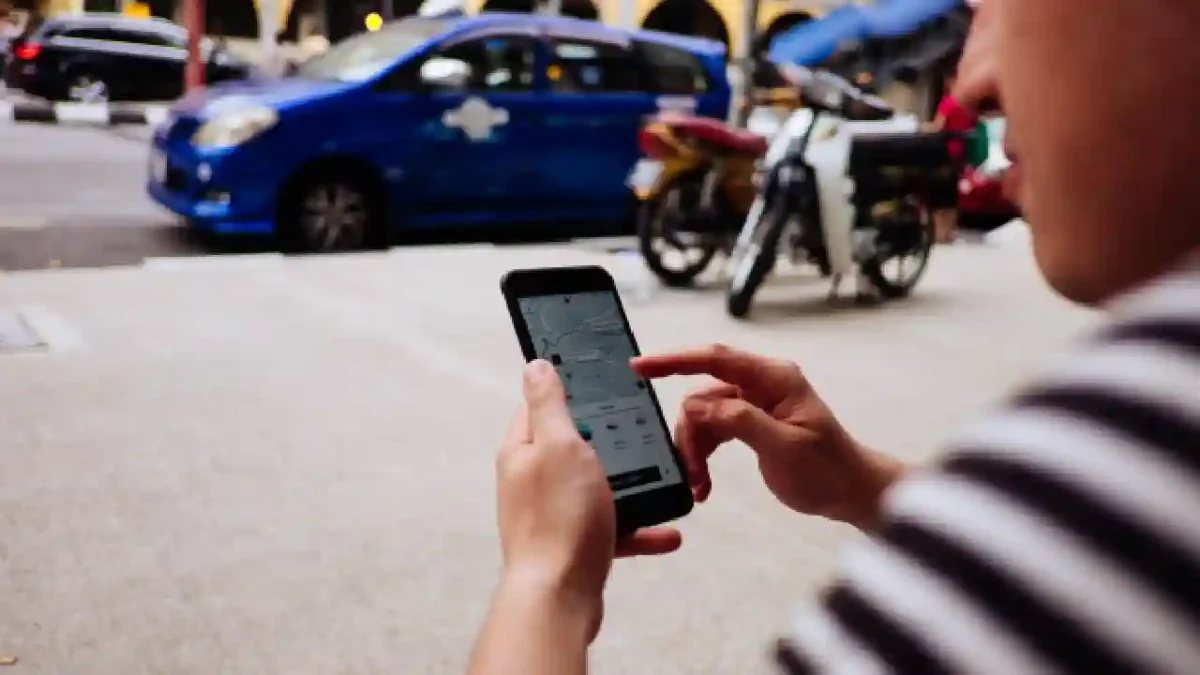
Uber does operate in Athens, but it’s not exactly what you might expect. In Athens, Uber works with licensed taxis, not private drivers.
Book an Uber in Athens, and you’re really just calling a regular taxi through the app.
Other apps like Beat (which used to be called Taxibeat) are way more popular in Athens and a few other mainland cities. They work a lot like Uber, but they play by Greek transport rules.
Common Misconceptions About Uber in Crete
A lot of tourists just assume Uber is everywhere. Not so in Crete. Some people even download the app in advance, only to find out it’s useless once they arrive.
No Uber doesn’t mean no transportation, though. Crete has tons of taxis, a solid public bus network, and plenty of car rental options. You’ll see taxis all over Heraklion, Chania, and Rethymno.
You might hear about “taxi apps” in Greece, but they don’t work the same way as Uber. These apps just help you book a regular taxi, not a private car.
If you want to see the island beyond the big towns, renting a car is usually your best bet.
Alternative Transportation Options in Crete
Uber isn’t in Crete, but you’ve got plenty of ways to get around. Honestly, the island’s set up pretty well for both locals and tourists.
Local Taxi Services
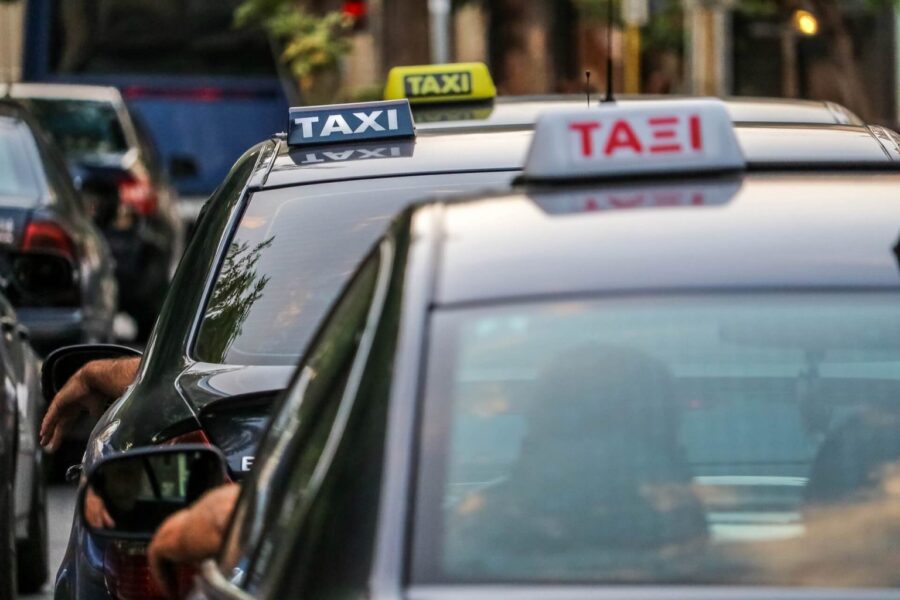
Taxis are everywhere in Crete. Look for silver cars with a “TAXI” sign on top. Most drivers know enough English to get by, so you shouldn’t have trouble communicating.
The government sets taxi fares, so you don’t have to haggle. It starts at about €3.50 during the day, a bit more at night. Longer trips between cities? Expect something like €70-80 from Heraklion to Chania.
You’ll find taxi stands in city centers and tourist hotspots. Hotels can call a taxi for you, too. If you like booking ahead, some companies have apps or phone lines.
Always check the fare before your ride, especially for longer trips. Tipping isn’t required, but rounding up is a nice gesture.
Car Rentals and Agencies
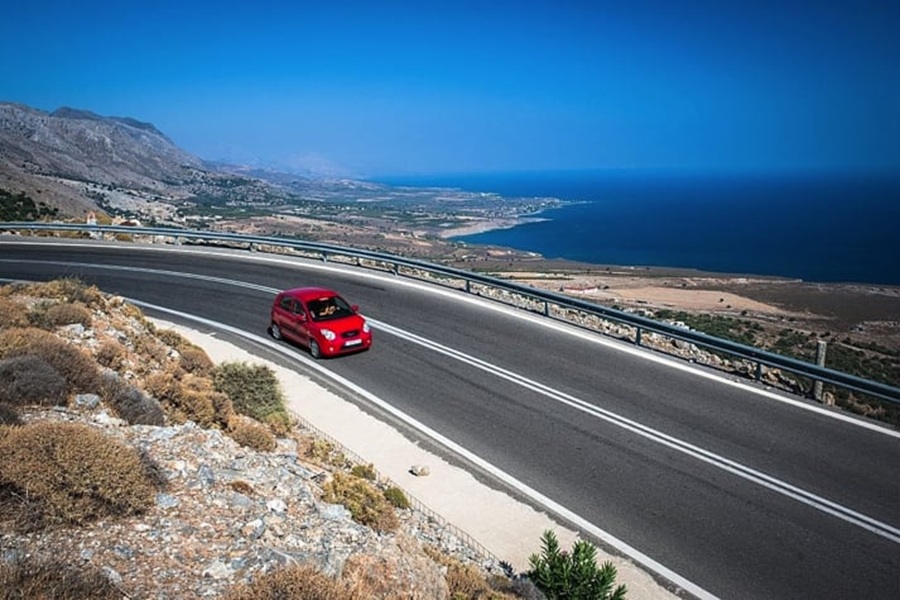
Renting a car is the way to go if you want freedom. Crete has tons of rental agencies—big names like Hertz, plus local outfits that sometimes offer better deals.
A small car in peak season runs about €30-40 per day. In winter, prices drop a lot. You’ll need to be at least 21 and show a valid license.
Think about where you’re going. Most roads are good, but if you’re heading up into the mountains or to wild beaches, a car with higher clearance helps.
Insurance is a must. Agencies offer different coverage, and you should check the car for damage before you drive off—snap a few photos just in case.
You’ll find rental offices at airports, in cities, and at popular tourist spots.
Public Transport and Bus Service
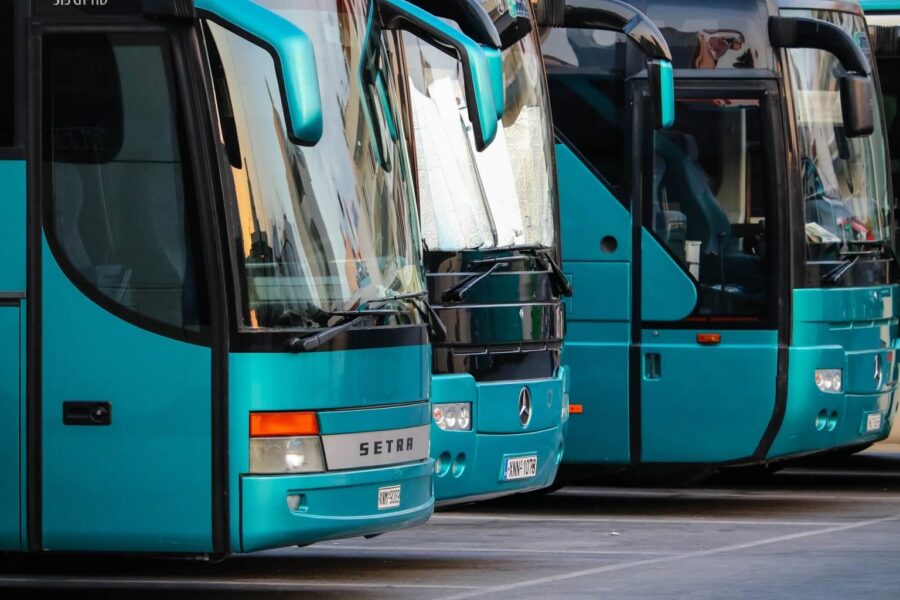
Crete’s buses are run by KTEL. They connect all the big cities and a lot of small towns. They’re cheap, comfy, and run on time more often than not.
A ticket from Heraklion to Chania (about 140km) costs €15-20 one way. Buy tickets at bus stations or from the driver if you’re boarding at a stop.
Main routes run often, especially in summer, sometimes every hour. Smaller villages get less frequent service, and weekends can be tricky.
The buses are modern and air-conditioned, which is a blessing in July and August. Some routes even give you amazing coastal views along the way.
Check the KTEL website or ask your hotel for schedules. Arriving 15 minutes early at the station isn’t a bad idea.
Best Taxi and Ride-Hailing Apps in Crete
Uber’s a no-go, but a few local taxi and ride-hailing apps work well in Crete. They’re not perfect, but they make life easier with fare estimates, digital payments, and real-time tracking.
FREENOW and Its Coverage

FREENOW is big in Europe, but not in Crete. People sometimes get confused because it’s all over Athens and other Greek cities.
If you’re headed to Heraklion, Chania, or Rethymno, don’t bother with FREENOW. It hasn’t made its way to Crete yet, and there’s no sign it will anytime soon.
Save your phone space for something more useful on your Cretan adventure.
Beat App for Travelers
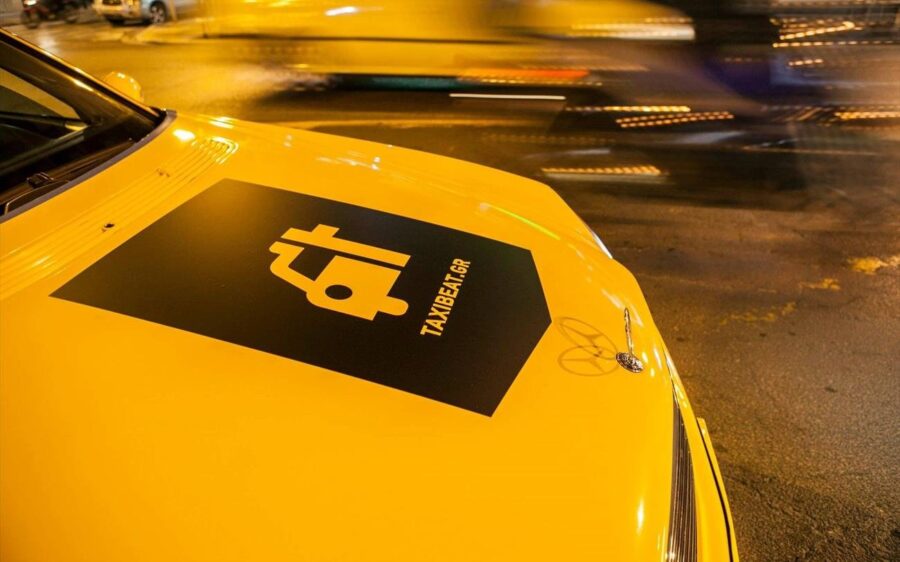
Beat is the app most locals and travelers actually use in Crete. It started as Taxibeat and works a lot like Uber, but with a Greek twist.
With Beat, you can:
- See available taxis on a map
- Watch your driver approach in real time
- Pay through the app (no cash needed)
- Rate your driver afterward
It covers the main Cretan cities: Heraklion, Chania, Rethymno. The interface is in English, so it’s easy for international visitors.
You get fare estimates before you book, which is a relief. I’ve usually waited less than five minutes for a cab in the city, though in the countryside or during August, it might take longer.
Other Notable Apps: Bolt, Taxibeat, imove
Bolt hasn’t landed in Crete yet, even though it’s popular in other parts of Europe. Don’t count on using it here.
Taxibeat is just the old name for Beat. If you see “Taxibeat” mentioned somewhere, it’s the same service, just rebranded.
Imove is a newer player. It’s Greek, covers both taxis and rentals, and its presence in Heraklion and Chania is growing. Worth a try if you want options.
Most towns also have their own local taxi companies with phone numbers. Hotels are usually happy to call a cab for you, sometimes at fixed rates to tourist spots.
Comparing Transportation Options: Costs and Convenience
Getting around Crete can be cheap or pricey, depending on how you do it. Knowing the usual rates and what you get for your money helps a lot.
Typical Taxi Fares in Crete
Taxis use meters, and the government sets the rates. A short ride in Heraklion or Chania? Expect €10-15. From Heraklion Airport to downtown, you’ll pay €25-35.
Longer trips, like Heraklion to Rethymno (about 80km), run €80-100. Popular tourist routes often have flat rates.
Night rides (midnight to 5am) cost about 20% more. Always ask for a ballpark fare before you hop in.
Some drivers offer day tours for €150-200, which isn’t bad if you’re splitting costs with friends.
Car Rental vs. Using Taxis
Renting a car in high season costs €30-50 a day, with better deals if you book for a week. Off-season, you could pay as little as €15-25 daily.
Why rent a car?
- Total freedom to find hidden beaches and villages
- No waiting for rides
- Cheaper for groups or families
- Easy to haul your stuff
Drawbacks?
- Some mountain roads are a bit hairy
- Parking in cities can be a pain
- Gas isn’t cheap—about €1.80-2.00/liter
- You have to think about insurance
If you’re just zipping around one town, taxis are simpler. But if you’re exploring all over, a rental car saves money and time.
When To Choose Public Transport
Buses in Crete are a bargain. A city ticket costs €1.20-2.00, and intercity fares range from €4-15.
The KTEL network connects the major towns and a ton of villages. Heraklion to Chania takes about 2.5 hours and costs €15—way less than a taxi.
Buses run often in summer, less so in winter or to little villages.
Public transport is great if:
- You’re on a budget
- You’re sticking to the main towns
- You don’t mind set schedules
- You’re traveling solo or as a couple
The only real downside is you can’t reach every remote beach or mountain spot by bus.
Getting Around Major Cities and Towns
Crete’s cities and towns are pretty easy to navigate, even without Uber. Each place has its own quirks, but you’ll find something that works for you.
Heraklion and Heraklion Airport
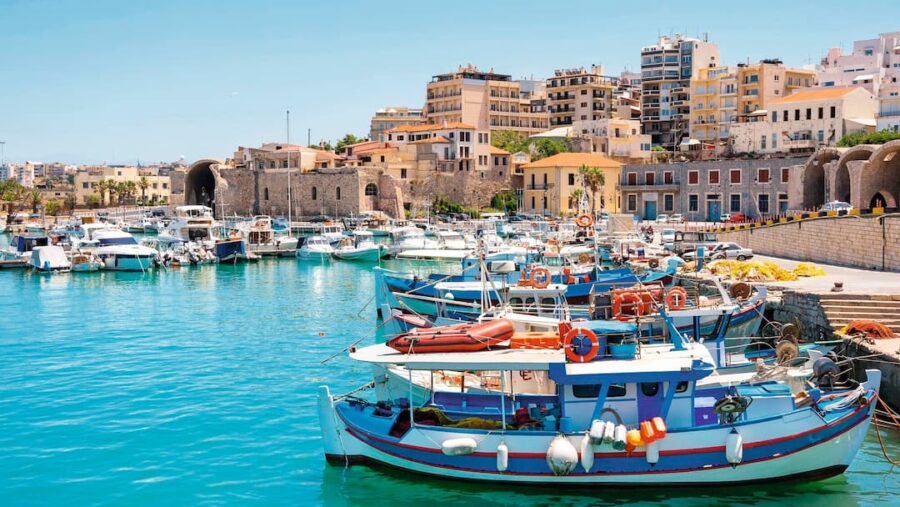
Heraklion has plenty of options. Blue city buses run through the center and out to nearby beaches; tickets are just €1.70.
The taxi stand at the airport is right outside the terminal. A ride to the city center costs about €15-20.
If you’re staying a while, grab a daily bus pass for €5—unlimited rides, which is handy. Hotels can set up airport pickups if you let them know in advance.
The city center is walkable, so you can easily reach the Archaeological Museum and the Venetian Fortress on foot.
Heading to Knossos Palace? Bus number 2 leaves from the main station near the port every 20 minutes. Tickets are only €1.70 each way.
Chania and Chania Airport

Chania’s old town begs to be explored on foot. Those narrow Venetian streets? Cars just don’t fit.
Airport taxis charge a fixed rate of about €25 to the old town. It’s straightforward, but sometimes the line gets long during peak arrivals.
The local KTEL bus runs from Chania Airport to the city center for just €2.50. Buses leave every hour from 6am to 11pm and drop you at the main bus station.
Within Chania, blue buses link up all major areas like Nea Chora Beach and Souda. Single tickets cost €1.70, and you can grab one from the driver.
If you’re planning day trips, the central bus station connects you to beaches like Balos and Elafonisi. Summer crowds mean these routes fill up fast, so getting there early is smart.
Car rental agencies set up shop at both Chania Airport and downtown. Renting gives you the freedom to wander at your own pace.
Exploring Rethymno and Elounda
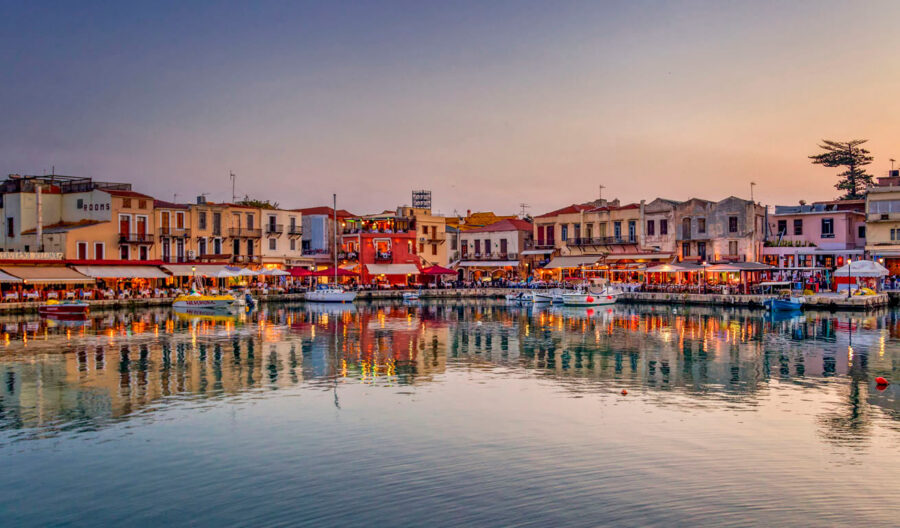
Rethymno’s old town is compact, modern in spots, and perfect for walking. Most sights are within a 15-minute stroll, so you won’t need wheels.
Local buses from the main station head to beaches like Platanias for about €2. For trips between Rethymno and other cities, KTEL intercity buses are a solid choice.
Taxis here use meters, but it’s wise to confirm the price before you hop in. A ride across town rarely goes over €10.
Elounda’s smaller and built for tourists. Resorts often provide shuttles to the center and nearby sights.
Heading to Spinalonga Island? Small boats leave regularly from Elounda’s harbor in summer, costing around €12 round-trip.
Walking around Elounda is easy and pleasant. The main promenade serves up sea views and plenty of restaurants.
Agios Nikolaos and Kissamos
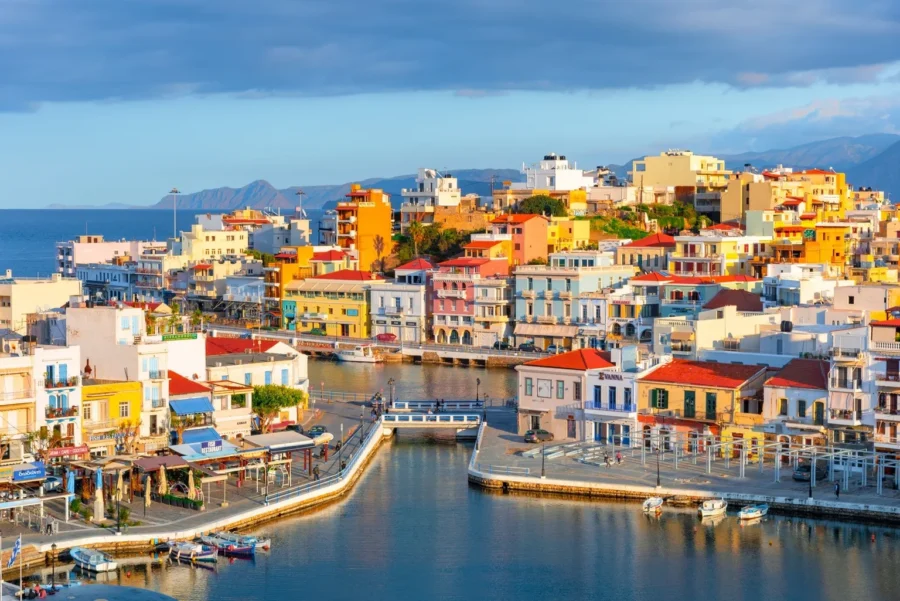
Agios Nikolaos wraps around a picturesque lake and harbor. The town’s small enough that you can walk pretty much everywhere in 20 minutes.
Local buses go from Agios Nikolaos to beaches like Voulisma and Istron for about €2 each way. The central bus station also offers routes to Heraklion and other big towns.
Taxis are everywhere and typically cost €5-8 for trips within town. If you’re heading out to remote beaches, negotiate the fare first.
Kissamos, over on Crete’s west side, is your gateway to some of the island’s best beaches. The town itself is compact and walkable.
You can catch boats to Balos Lagoon from Kissamos in summer for around €25 per person. The bus station connects you to Chania (40 minutes, €3.60) and smaller villages.
Renting a car is almost a must here, because the best beaches are tough to reach by bus.
Traveling to and from Crete
Reaching Crete depends a bit on where you’re starting. The island connects to mainland Greece and other popular destinations by air and sea.
Connections to Athens and Other Mainland Cities
Athens is the main jumping-off point for most international travelers. Daily flights run from Athens International Airport to both Heraklion and Chania, usually taking about 50-55 minutes.
During summer, flights ramp up—sometimes almost hourly. Budget carriers like Aegean Airlines and Sky Express can be a bargain if you book early.
Prefer the sea? Ferries link Athens’ Piraeus port to Heraklion, Chania, and Rethymno. Overnight journeys last 7-9 hours and have a certain old-school romance, though they depend on the weather.
Cities like Thessaloniki offer direct flights to Crete too, especially in high season. That makes island-hopping a lot easier.
Ferry Services: Minoan Lines
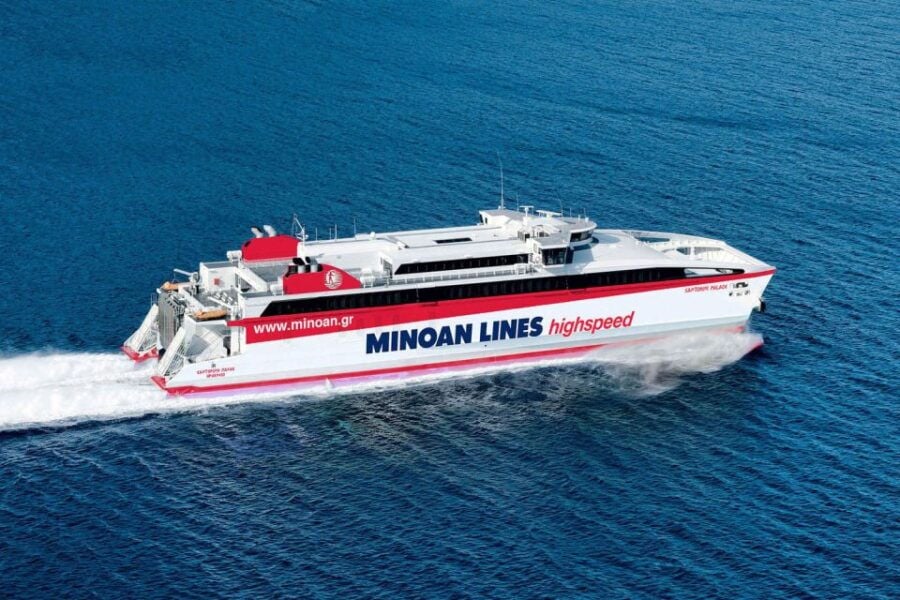
Minoan Lines runs some of the best ferries to Crete, with modern ships and plenty of comforts. You’ll find everything from airline seats to deluxe cabins.
Their main route connects Piraeus (Athens) to Heraklion, with several departures each week. Schedules expand in summer.
Onboard, you get restaurants, cafes, shops, Wi-Fi, and even pet-friendly spaces. It’s not exactly a cruise, but it’s comfortable.
Overnight journeys take about 9 hours. Booking a cabin early is a good idea, especially June through September.
You can bring your rental car on the ferry, but that costs extra. Still, it’s handy if you want to drive on both the mainland and Crete.
Visiting Santorini, Mykonos, and Paros
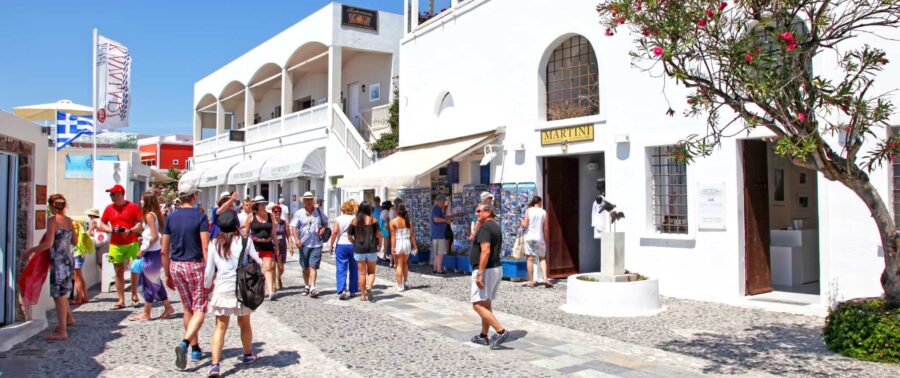
Island-hopping from Crete is doable, but it takes some planning. Santorini’s the easiest—daily high-speed ferries leave from Heraklion in summer, taking about 2 hours.
Mykonos is trickier, with fewer connections and a 3-4 hour ferry ride. These usually run May to October, with slim pickings in the shoulder seasons.
Paros? There are 2-3 weekly ferries from Heraklion in summer, and the trip takes about 3.5 hours.
A few tips: book your ferry tickets a few days in advance during high season, check the weather (rough seas can mess up schedules), and build in buffer days just in case.
Honestly, most travelers pick just one other island to pair with Crete. Trying to squeeze in all three is more stress than it’s worth.
Airport Transfers and Options
After landing at Heraklion or Chania airports, you’ll need a ride to your hotel. Uber doesn’t operate here—confirmed by pretty much everyone.
Here’s what you can do:
For your return trip, set up your airport ride a day in advance. Last-minute scrambles aren’t fun.
Getting around Crete takes a little planning and some local know-how. The island has its quirks, and if you’re not ready, transportation can turn into a headache.
What to Know About Tips and Payments
Cretan taxi drivers don’t expect huge tips. Just round up, or toss in 5-10% for good service.
Most prefer cash payments, so keep some euros handy. Some taxis in busy tourist areas take cards, but don’t count on it—especially in the villages.
If there’s no meter, agree on a price before you start. This matters even more for longer rides between towns.
Sometimes drivers pitch “special rates” to tourists. Politely decline and insist on the meter or a fair price. Official rates are usually posted inside the cab.
KTEL buses (the main public transport) almost always want exact change. Break those big bills before you board!
Dealing with Crowds and Peak Seasons
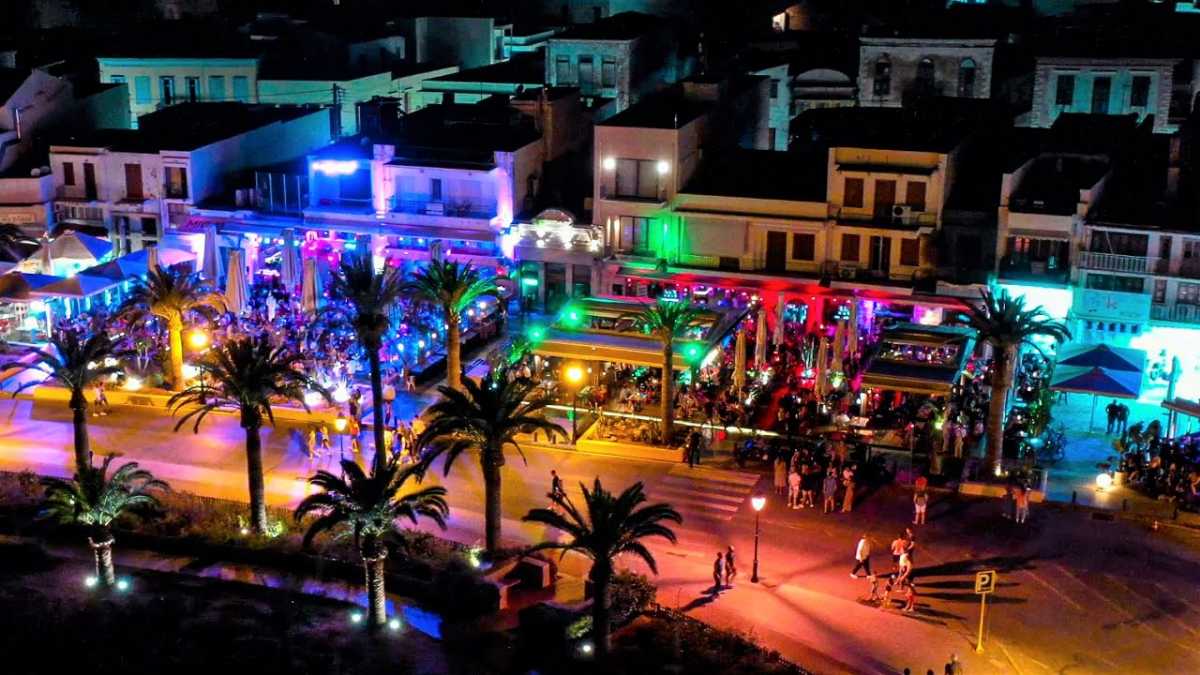
July and August? The crowds descend. Taxis get scarce, especially at night in spots like Heraklion and Chania.
Book your rides ahead during peak season. Many hotels can set up shuttles if you ask.
Try to travel early in the morning or later at night—less traffic, more available taxis.
If you’re staying more than a few days, renting a car usually ends up cheaper than taking taxis everywhere. Plus, you get to explore.
Public buses get packed in the summer. Show up early to snag a seat, especially for popular routes like Heraklion to Knossos.
Traveling in Rural Areas
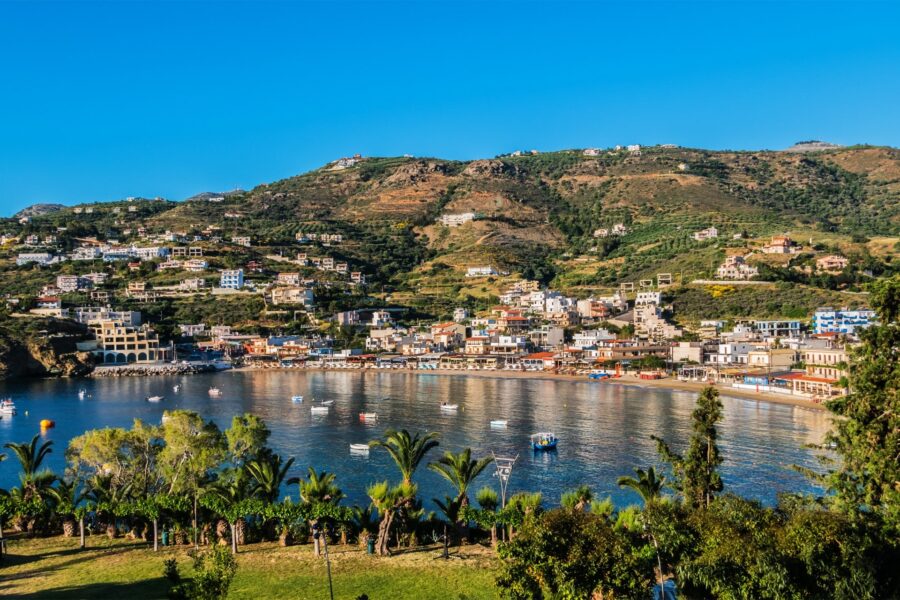
Rural Crete is a different world for transportation. Buses might only run once or twice a day to remote villages.
Locals often know about unofficial shared taxis or rides—just ask around.
Plan extra time for rural trips. Roads can be winding and narrow, especially in the mountains.
If you rent a car for rural adventures, pick one with good clearance. Some roads are rough and not well-maintained.
Sometimes, rural hosts will pick you up from town if you arrange ahead. That can be a lifesaver, especially if you’ve got luggage.
Some remote areas have no public transport at all. Do your homework before heading out to hidden beaches or mountain villages.
Exploring Crete Beyond Transport
Crete’s transportation quirks might seem daunting, but really, they’re just part of the adventure. The island itself more than makes up for any hassle.
Cretan Beaches and Hidden Spots
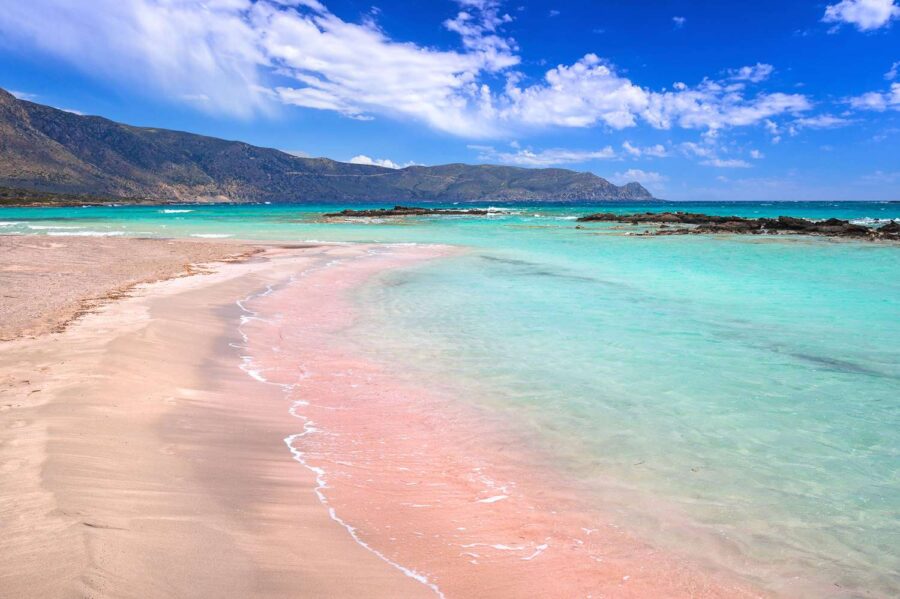
Crete’s beaches are legendary. Elafonisi Beach, with its pink-tinged sand, is a must. You can get there by public bus from Chania in summer.
Preveli Beach offers a palm forest and a river running into the sea. Boats from nearby towns can get you there.
Balos Lagoon? The turquoise water and white sand are unreal. Many join day tours, but some negotiate with taxi drivers for a round trip.
Matala’s caves (famous with hippies in the ‘60s) and Seitan Limania—a narrow, cliff-flanked cove—are worth the trek. Locals usually love sharing their favorite hidden beaches if you ask.
Cultural Highlights: Knossos and Local Traditions

The Palace of Knossos near Heraklion is a 4,000-year-old wonder and the heart of Minoan civilization. Local buses from Heraklion make it easy to visit. Don’t skip the “Prince of Lilies” fresco.
Villages like Archanes, just south of Knossos, still keep their old-school feel with stone houses and local wine.
In mountain towns like Anogia, you might stumble into a taverna with locals playing the lyra. These places keep traditions alive.
You’ll find craft workshops all over Crete—pottery in Margarites, knife-making in Chania’s old town. The skills are passed down through generations.
Summer festivals (panigiria) pop up in many villages, with music, dancing, and endless food. If you get the chance, go. It’s a real slice of Cretan life.
Food Scene and Delivery Apps

Cretan food is something else. The Mediterranean diet here isn’t just hype—think dakos (rusks with tomato, cheese, and olive oil) and kalitsounia (sweet or savory pastries).
Uber Eats doesn’t exist, but local delivery apps do. e-Food works in Heraklion and Chania, delivering from loads of restaurants. Box is another option in bigger towns.
Most traditional tavernas don’t deliver, but honestly, they’re worth the walk. Look for spots where locals eat—the food’s usually better and cheaper.
Cretan wineries make some standout wines from native grapes. Heraklion’s wine region has several wineries open for tastings and tours.
Most towns have weekly fresh markets; Chania’s Municipal Market is open daily. If your place has a kitchen, grab some local ingredients and try your hand at a meal.
Scooter Rentals and Alternative Mobility
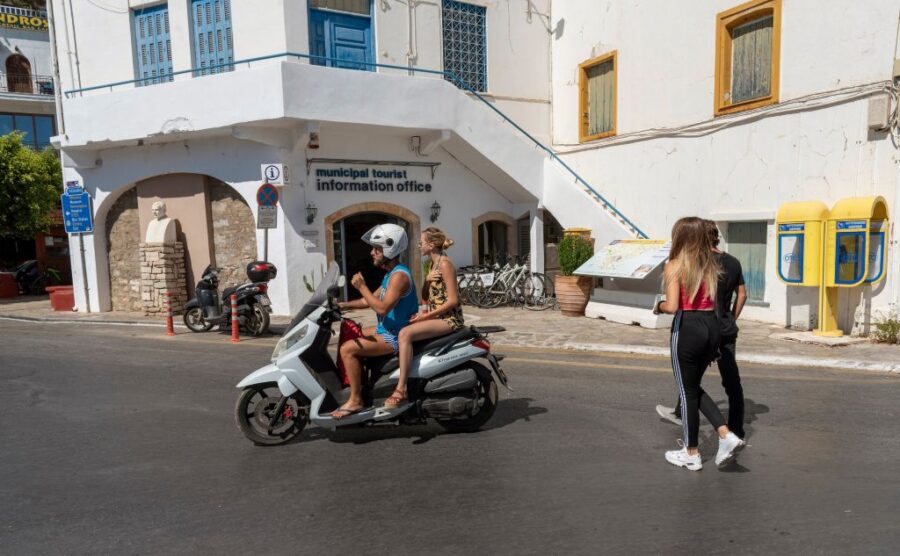
Renting a scooter or moped is a fun way to see the island, especially along the coast. Shops are everywhere in tourist areas, with rates around €15-30 per day.
Only rent a scooter if you’ve got experience—Crete’s roads can be wild, with sharp turns and sudden drops. Always wear a helmet and double-check your insurance covers scooters.
E-bikes are catching on, especially for flatter coastal routes. They make hills less daunting but still give you a workout.
Chania’s Old Town (and similar areas) are best on foot. The streets are too narrow for anything else, so bring comfy shoes.
For longer trips between big towns, the KTEL bus network is still your best bet. Buses are reliable, cheap, and the staff are usually helpful.
Frequently Asked Questions
Travelers to Crete often wonder how to get around, since ride-hailing apps work differently here than in other places. Here are some answers to common questions about exploring this beautiful Greek island.
What are the available ride-hailing services in Crete for getting around?
Uber doesn’t operate on Crete, which catches a lot of travelers off guard. If you’re used to tapping an app for a ride, you’ll need to adjust—old-school taxis are still the go-to for getting around.
Local taxi companies cover the island’s big cities and tourist hotspots. You’ll spot taxi stands at airports, ports, and in central spots in towns like Heraklion and Chania.
How does one commute from Crete’s airports without Uber?
When you land at Heraklion or Chania airports, just head outside and you’ll see the official taxi ranks. These taxis run on meters and will get you to your destination without much fuss.
Plenty of hotels offer shuttle services if you set it up ahead of time. For groups, this can actually save a bit of money.
Public buses link the airports with the main towns, but the schedules can be a bit unpredictable. If you’re thinking about taking the bus, it helps to check the timetable before you arrive.
What is the preferred taxi app used by locals in Crete?
There isn’t really a single “Uber-like” app that everyone uses in Crete. A few local taxi companies have their own apps, but honestly, they’re not super popular.
Most people just pick up the phone to call a taxi when they need one. Hotels and restaurants are usually happy to help with this, which is a relief if you don’t speak Greek.
Are there any alternatives to Uber operational in Heraklion?
Heraklion sticks to traditional taxi services as the main alternative to ride-hailing apps. You can flag one down on the street or head to a taxi stand—there are plenty around the city.
Some small local companies let you pre-book rides by phone or through their websites. That’s handy if you want to schedule a trip or need an airport transfer.
A lot of visitors just rent a car in Heraklion. It’s hard to beat the freedom you get for exploring the island on your own schedule.
Can travelers rely on services like Lyft when visiting Chania, Crete?
Lyft doesn’t run in Chania—or anywhere on Crete, for that matter. These big international ride-hailing apps just haven’t shown up on the island yet.
If you’re heading to Chania, you’ll need to stick with local options: taxis, rental cars, or the public bus. Grabbing a taxi is easy around the old harbor, the bus station, and most busy spots.
Renting a car really gives you the most freedom to explore Crete’s diverse landscapes and those tucked-away spots you might otherwise miss.
The island’s main roads stay in good shape, but those mountain routes? They can get a bit tricky, especially if you’re not used to winding roads.
Crete’s public bus network (KTEL) connects the major towns and top attractions, and the fares won’t break the bank.
Buses usually show up on time, but if you’re headed somewhere remote or traveling off-season, you might wait a while.
For shorter trips within cities, taxis make life easier—no need to stress about parking or figuring out bus schedules.
A lot of visitors end up mixing things up: taxis for city rides, and then they rent a car for those longer day trips out to beaches or ancient ruins.



